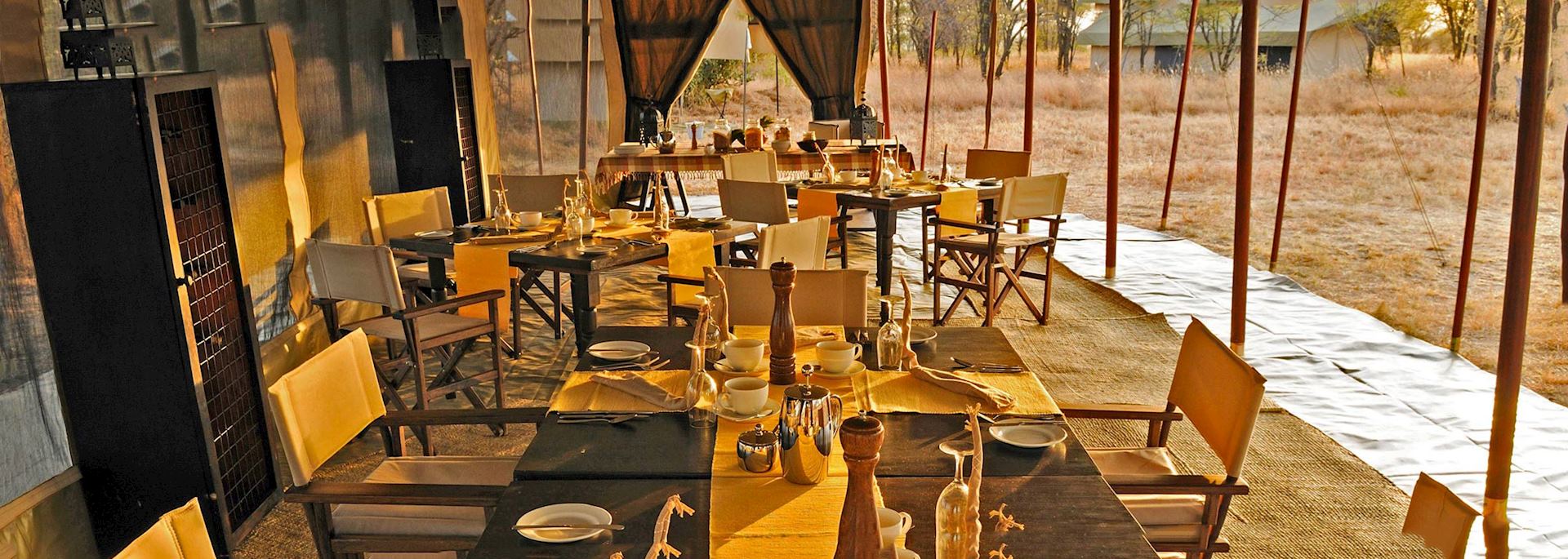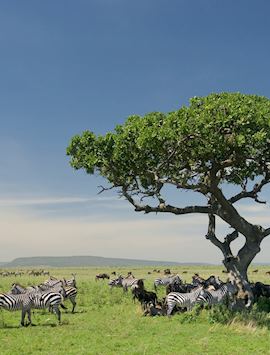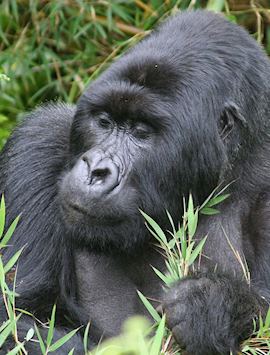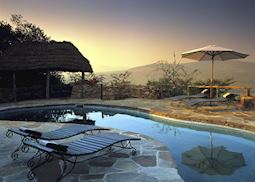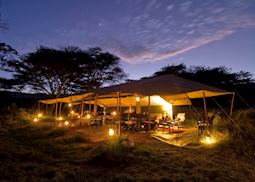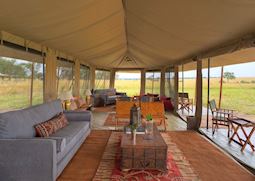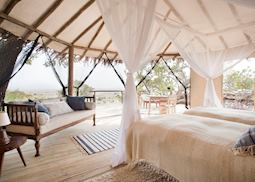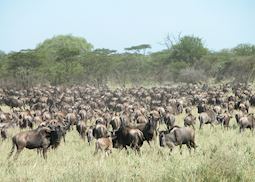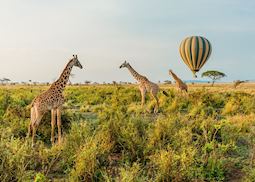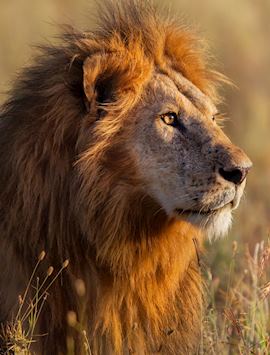
Olakira Migration Camp is a classic mobile tented camp that moves between prime Serengeti wildlife areas twice a year to take advantage of the Great Migration. The camp has an intimate feel with just a small number of guest tents and two central communal tents that are open to the surrounding plains, with animals often passing through the camp itself.
Balancing a rustic style with a high level of comfort, the camp offers a friendly, personalized service, guides with an excellent knowledge of the Serengeti and its wildlife, and spacious, comfortable tents that add a hint of luxury but don’t take anything away from the authentic safari experience.
Whether in the north or the south, a stay at Olakira puts you in the heart of the action. The tents offer fantastic views, and we’ve found that the service and guiding are top class.
who's been there
-
617-223-4521617-223-4335
- Make an inquiry
Photos of Olakira Mobile Camp
Rooms
Guest tents are generous in size, featuring large king sized or twin beds and en suite bathrooms with hot water safari bucket showers, wash basins and flushing environmentally friendly toilets. They’re furnished with colorful African textiles, rugs and linens, as well as a wooden writing table and rustic-style lamps. Each tent boasts a private shaded veranda where you can sit and look out over the Serengeti plains, watching out for any passing wildlife.
Location
The camp is set up in a small forest in the southern Serengeti, or Ndutu area, from December to March, where lion and cheetah hunt in the open grasslands and wildebeest and zebra give birth to their young. From June to November the camp is moved north for views of the renowned Mara River crossing, where wildebeest attempt to cross while avoiding the jaws of crocodile.
Food and drink
Tasty, wholesome meals are served in the dining tent, outside or on your private veranda. Both continental and cooked breakfasts are offered each morning, and at lunch you can tuck into a buffet of salads and freshly baked breads alongside a hot dish. Three-course dinners are usually a social affair, with sundowners served before or after to enjoy as you share stories with fellow guests.
Families
Children aged five years and over are welcome to stay here. Families can stay in one of the larger tents with separate bedrooms. While the camp doesn’t offer special safaris for children, families of six or more are guaranteed a private safari vehicle in low season. The wild, unfenced nature of the camp means children must be supervised at all times.
Facilities and activities
Game drives with the experienced and knowledgeable guides take place twice a day and can include bush breakfasts, picnic lunches and dinners so you don’t need to return to camp. Hot air balloon safaris allow for a bird’s eye view over the plains. If staying in the north, you can visit one of the nearby villages to learn more about the local culture of the Kuria people.
Environmental and social responsibility
The camp has a low impact on the natural environment as none of its structures are permanent so they can be dismantled and moved twice a year. The camp also tries to offset any fossil fuel emissions it produces through a local community forestation program.
Tour ideas in Serengeti National Park
Our itineraries are there to spark ideas for how you could include a stay at Olakira Mobile Camp as part of your trip. Treat them simply as suggestions, because every aspect of the trip we create for you will be yours to define.
Alternative places to stay nearby
Where possible, we like to offer a range of accommodation for each stop of your trip, chosen by our specialists as some of their favorite places to stay. To help you make the right choice, we give each property a rating based on its facilities and service, but we also look for hotels with distinct character or a location that can't be bettered.
-
![The pool at Klein's Camp, Serengeti National Park]()
&Beyond Klein’s Camp
Serengeti National Park -
![Dunia Camp, Serengeti National Park]() Responsible ChoiceWe've hand-selected a range of tours and stays across the world that go above and beyond to be a force for good by supporting local businesses, educating staff, challenging local norms, or promoting conservation and biodiversity efforts. Your Responsible Choice helps increase the positive impact of your trip.
Responsible ChoiceWe've hand-selected a range of tours and stays across the world that go above and beyond to be a force for good by supporting local businesses, educating staff, challenging local norms, or promoting conservation and biodiversity efforts. Your Responsible Choice helps increase the positive impact of your trip.Dunia Camp
Serengeti National Park -
![Lounge at Kimondo Camp]()
Kimondo Camp
Serengeti National Park -
![Lamai Serengeti, Serengeti National Park]()
Lamai Safari Camp
Serengeti National Park
Experiences while staying here
The following activities are designed to give you the most authentic experiences of the area where you're staying. We work with local guides, who use their knowledge and often a resident's eye to show you the main sights and more out-of-the-way attractions. Our specialists can also suggest outdoor pursuits and activities, such as cooking classes, that will introduce you to the traditions of the area's inhabitants.
-
See the Great Migration ![Wildebeest migration, Serengeti]()
See the Great Migration
See the Great Migration
Throughout the year, the two million strong migration of wildebeest, zebra and gazelles wanders the plains of the Serengeti and the Masai Mara in search of water and fresh grazing.
View details -
Serengeti balloon safari ![Serengeti hot-air balloon safari]()
Serengeti balloon safari
Serengeti balloon safari
This is one of the most popular ways to see the wildlife of the Serengeti. The flight will last for around an hour before you land to celebrate with champagne before a full English breakfast prepared and served in style in the middle of the bush.
View details
Serengeti National Park and nearby places
- Northern Tanzania 68 miles away
- Ngorongoro Crater 68 miles away
- Lake Eyasi 85 miles away
- Ol Doinyo Lengai 75 miles away
- Karatu 84 miles away
- Lake Natron 80 miles away
- Lake Manyara National Park 95 miles away
- Tarangire National Park 136 miles away
- Arusha 141 miles away
- West Kilimanjaro 158 miles away
